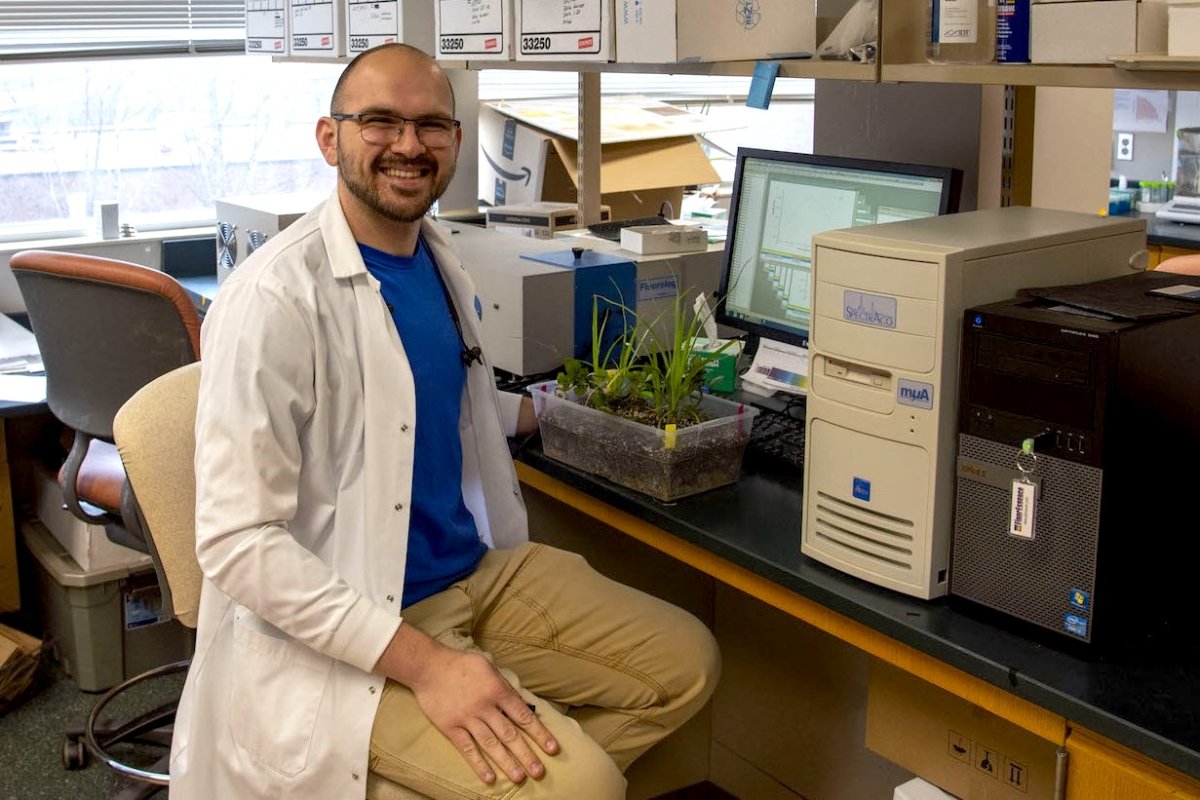A researcher has developed a bioengineered potato plant that can detect potentially harmful levels of gamma radiation.
Rob Sears, a Ph.D. student at the University of Tennessee's Herbert College of Agriculture, has engineered the plant to indicate high radiation levels by changing the color of its leaves. When exposed to gamma radiation, the plant's leaves produce a green glow, providing a reliable indication of harmful levels without complex monitoring technologies.
Globally, there is a renewed interest in using nuclear power as a cleaner alternative to fossil fuel energy sources, such as coal plants, to meet climate goals. As a result, the use of nuclear energy will likely increase over the next few decades. This is expected to be accompanied by a surge in demand for effective and easily accessible radiation detection methods.

Nuclear power plants—which rely on the process of fission, or the splitting of atoms—have been proven to be safe means of generating power, despite widely publicized incidents such as those at Chernobyl and Fukushima.
But to assuage public concerns and ensure safety, there is a need for new technologies to monitor for radiation leakage in the environment surrounding nuclear power sources, according to a study published in the Plant Biotechnology Journal that describes Sears' new technology.
Gamma radiation, which is produced during the fission process, is ionizing, meaning it removes electrons from atoms and molecules from materials such as air, water and living tissue. Ionizing radiation can pass through these materials, potentially causing damage to living tissue and DNA, particularly at high levels of exposure.
"Gamma radiation is incredibly harmful to humans," Sears told Newsweek. "Any amount of ionizing radiation can cause DNA damage, which can cause cancer that eventually harms or kills you. In addition, humans are very susceptible to acute radiation sickness."
At present, gamma radiation is detected using mechanical sensors that have several drawbacks, including limited availability, reliance on a power supply and the requirement for a human presence in a potentially dangerous area.
"Current mechanical sensors are not feasible for long-term environmental monitoring of ionizing radiation due to costs associated with maintenance and operation," Sears and colleagues wrote in the study. "Further, mechanical sensors do not provide an accurate measure of the biological impact of low doses of exposure over an extended period of time."
In an attempt to address some of these limitations and help ensure human safety as nuclear energy becomes more common across the landscape., Sears and his colleagues developed the potato plant biosensor, otherwise known as a phytosensor, to detect ionizing gamma radiation.
Plant biosensors are emerging as an option to detect and report the presence of environmental disturbances. Compared with mammals, plants have a much higher radiation tolerance, allowing them to persist and monitor far greater exposures than their animal counterparts can.
"There are many upsides to nuclear energy, but the one major downside is the potential for an explosive catastrophe that would spread radionuclides across vast areas of land," Sears told Newsweek. "During the two major nuclear disasters to date, mechanical radiation sensors have either been insufficient (Chernobyl) or damaged (Fukushima), which has led to errors in the responses to these disasters."
For their research, Sears and colleagues used bioengineering techniques to harness the plant's DNA damage response machinery to produce a fluorescent light when exposed to gamma radiation. In the study, the team found that the plant responded to a wide range of gamma radiation.
The researchers chose to modify potato plants because this crop is grown across the world in both hospitable and adverse climates. In addition, they reproduce through tubers in the soil, producing genetically identical offspring that provide consistent results.
"Potatoes are highly resilient and are excellent at adapting and multiplying in different environments," Sears said in a press release. "They also have complex responses that are often specific to an environmental stressor, making them ideal reporters of conditions such as gamma radiation."
He went on: "My research aimed to make these responses visible and evident even from a distance, acting as a natural warning sign of harmful radiation without the need for mechanical sensors."
As well as being easy and cheap to propagate, the plant does not need a power supply and conducts its own maintenance.
"When used in addition to current mechanical sensing equipment, we believe that the phytosensor we developed would make up for the drawbacks of mechanical sensors and lead to more accurate detection of ionizing radiation in the environment," Sears told Newsweek. "By adding phytosensors to existing networks of radiation monitoring equipment, we believe that human safety can be better-ensured in the event of a nuclear catastrophe."
The researcher said he would need to coordinate with many government agencies to determine an exact use-case scenario for the technology, but he highlighted two potential applications.
The first would be radiation monitoring without the need for a power supply in the case of a nuclear disaster.
"An earthquake and subsequent tsunami caused the Fukushima-Daiichi disaster in 2011. In addition to damaging the powerplant, 23 of the 24 mechanical monitoring stations around the plant were rendered non-functional due to loss of power," Sears said.
"In this scenario, a population of the phytosensor plants could have been cultivated around these mechanical monitoring stations and be used even if the mechanical sensors have failed. This would have reduced the need for people to risk their lives by driving around with radiation monitors to understand the extent of the disaster, which was required at the time."
The second potential use-case would be monitoring of nuclear power plant waste sites, according to the researcher.
"Plants can serve as monitors of air, soil, and groundwater, so are uniquely applicable to monitor the environmental impact of buried nuclear waste that could leak during long-term storage," Sears said. "These storage sites are often very far away from human settlement as well, so the phytosensor's ability to power and repair itself is desirable compared to mechanical sensors that rely on human maintenance."
Update 11/27/23, 8:50 a.m. ET: This article was updated with additional comments from Rob Sears.
Uncommon Knowledge
Newsweek is committed to challenging conventional wisdom and finding connections in the search for common ground.
Newsweek is committed to challenging conventional wisdom and finding connections in the search for common ground.
About the writer
Aristos is a Newsweek science reporter with the London, U.K., bureau. He reports on science and health topics, including; animal, ... Read more
To read how Newsweek uses AI as a newsroom tool, Click here.








